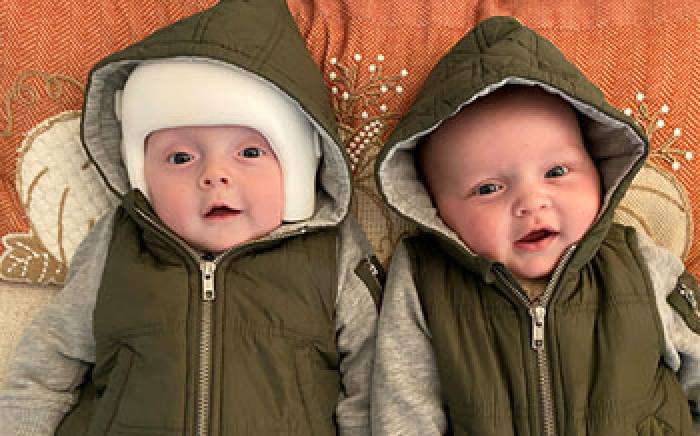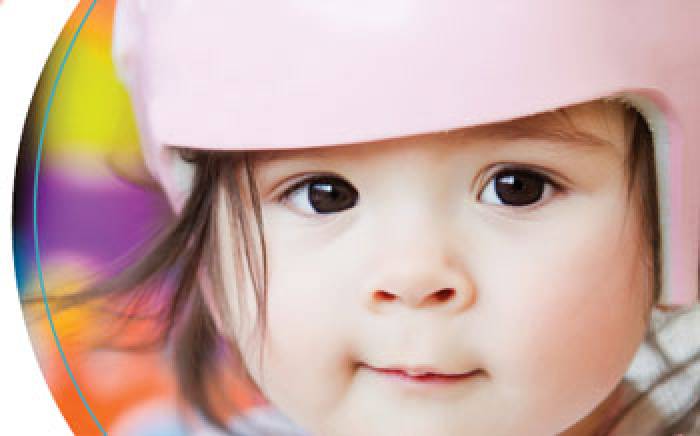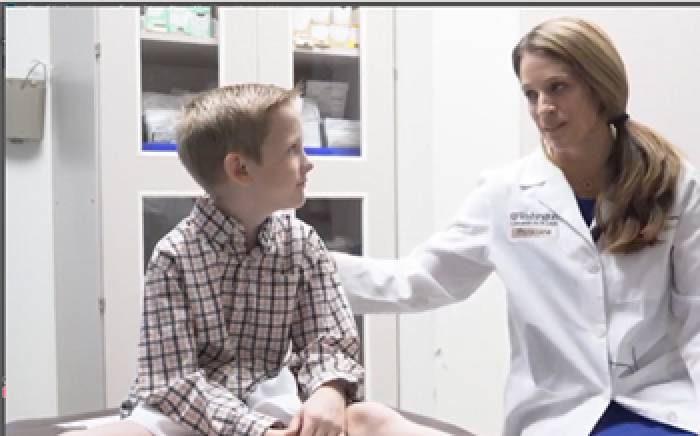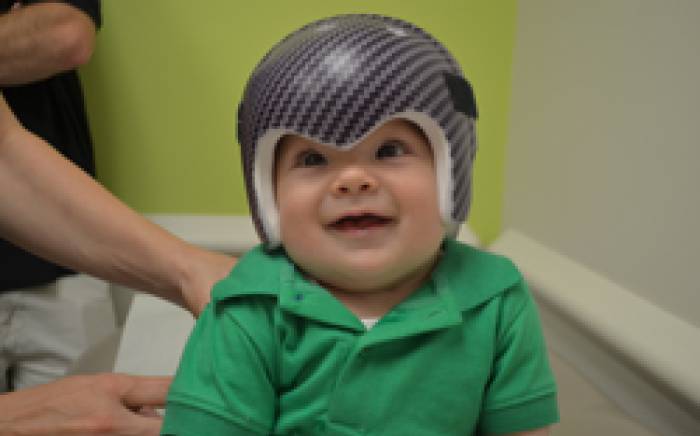 Since 1992, the American Academy of Pediatrics has recommended that babies be put to sleep on their backs to prevent suffocation and reduce the risk of sudden infant death syndrome (SIDS). But one consequence of back sleeping can be a misshapen head in babies.
Since 1992, the American Academy of Pediatrics has recommended that babies be put to sleep on their backs to prevent suffocation and reduce the risk of sudden infant death syndrome (SIDS). But one consequence of back sleeping can be a misshapen head in babies.
This condition, known as deformational plagiocephaly, refers to an asymmetrical head shape from repeated pressure to the same area of the head. The head may be flat across the back or on one side.
The change in head shape may begin when the baby is 1 to 2 months old. A baby’s skull bones are soft and pliable at birth. To allow for brain growth, the skull plates are not fully fused yet. But when a baby is repeatedly in the same position, the skull can flatten.
Sometimes babies are born with plagiocephaly. Babies who were part of a multiple birth may have had restricted movement in the uterus; the birth process also can temporarily flatten the baby’s skull. Other causes may be due to muscular torticollis, which causes tight neck muscles so the baby only turns her head one direction to sleep.
Early Intervention Is Key
“The good news is that plagiocephaly does not affect the baby’s brain or growth,” says Sybill Naidoo, RN, CPNP. “It can be corrected through positioning or by wearing a helmet for a few months.”
Naidoo is the nurse manager at St. Louis Children’s Hospital’s Deformational Plagiocephaly Clinic. The clinic is dedicated to the diagnosis and non-surgical treatment of kids with plagiocephaly.
“We do see more babies with this condition than we did 20 years ago because of back sleeping and the increased use of infant devices such as car seats, strollers, bouncy seats and swings that keep a baby continually on his back,” Naidoo says. “It used to be just a handful of babies were affected, but now we see about 300 to 400 babies each year with plagiocephaly.”
If you’re concerned about your baby’s misshapen head, talk to your pediatrician. Naidoo says any baby with a misshapen head should be evaluated to rule out more serious conditions such as craniosynostosis. This condition occurs when the sutures between the skull plates fuse together too early, which limits space for brain growth. With either deformational plagiocephaly or craniosynostosis, early treatment—between 2 and 4 months of age—is important.
Through the Deformational Plagiocephaly Clinic, babies receive a skull X-ray to rule out craniosynostosis, followed by an exam.
“If we see a baby early enough, we can usually use positioning to correct the head shape,” Naidoo says. “After about 4 months of age, or if the baby’s head is severely misshapen, the baby may need to wear a helmet for treatment.”
Helmet Help
When a baby is 4 to 6 months old, the head is soft and growing quickly. A helmet fits over the wider parts of the head to redirect growth to flatter areas. Helmets are custom made for each baby. Typically, they are worn 22 hours a day for an average of four months.
“Babies are very resilient to change and adjust well to wearing the helmet,” Naidoo says. “The idea of wearing a helmet is harder on the parents. But now people are decorating helmets with bows or stickers to personalize them more.”
Positioning Tips to Prevent or Ease Plagiocephaly
- Make sure your baby gets at least one hour of tummy time each day. This also strengthens neck and arm muscles while improving motor skills.
- When you’re out and about, leave the car seat in the car. Carry your baby instead using a front carrier or sling (learn about sling safety). This eases the continuous pressure on the back of your baby’s head.
- Limit time in swings and bouncy seats, which also put pressure on the back of the head.
- Every night, put the baby at the opposite end of the crib from the night before. The baby will naturally face outward so pressure points are alternated.








